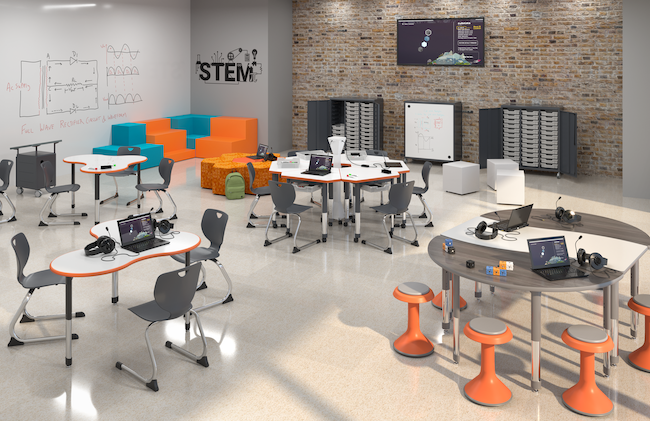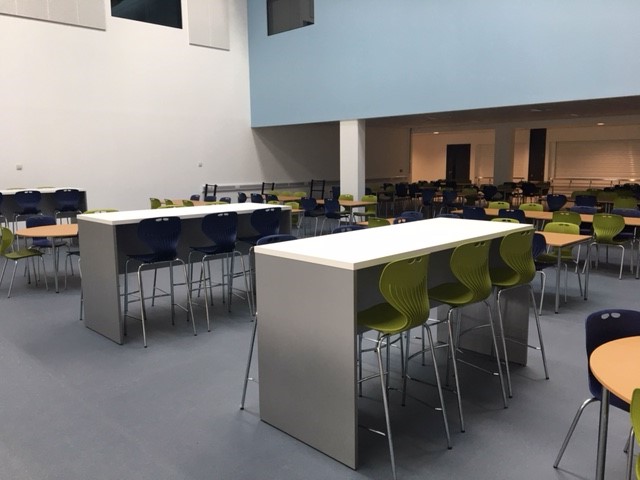The Crucial Role of Well-Designed Furniture in Enhancing the Learning Environment
- Spaces Taylored

- Nov 21, 2023
- 2 min read
When envisioning an optimal learning environment, the focus often falls on curriculum, teaching methods, and technological integration. However, one aspect that significantly influences the overall experience and effectiveness of education is frequently overlooked: the design of furniture within the learning space. Well-designed furniture is not merely about aesthetics; it plays a pivotal role in creating an environment that fosters engagement, collaboration, and positive learning outcomes.
1. Ergonomics and Comfort
Ergonomics in educational furniture is not just a buzzword; it directly impacts the physical well-being of students and educators. Uncomfortable seating or poorly designed desks can lead to discomfort, distraction, and even health issues. Well-designed furniture takes into consideration the ergonomic needs of individuals, providing adjustable chairs and desks that cater to different body types and sizes. This focus on comfort allows students to concentrate on learning rather than being distracted by physical discomfort.
2. Facilitating Collaboration and Interaction
Modern educational approaches emphasize the importance of collaboration and interaction among students. Well-designed furniture supports these pedagogical goals by offering flexible seating arrangements that encourage teamwork. Collaborative tables, movable seating options, and modular furniture enable teachers to create dynamic learning environments that promote discussion and group activities. A well-designed classroom becomes a space where students feel comfortable working together, fostering a sense of community and shared learning experiences.
3. Adaptability for Diverse Learning Styles
Each student has a unique learning style, and well-designed furniture accommodates this diversity. Traditional rows of desks may not cater to the needs of every student. Flexible seating options, such as bean bags, floor cushions, and alternative workstations, allow students to choose environments that suit their preferences and optimize their learning experience. This adaptability recognizes that one size does not fit all in education.
4. Technology Integration
In the digital age, technology is an integral part of the learning process. Well-designed furniture seamlessly integrates technology, providing outlets, charging stations, and accommodations for devices. Smart desks and collaborative workstations with built-in technology support interactive learning experiences, ensuring that the educational environment stays relevant and prepares students for the tech-driven world beyond the classroom.
5. Creating a Positive Atmosphere
The aesthetics of a learning environment have a significant impact on the psychological well-being of students. Well-designed furniture contributes to the creation of a positive and inviting atmosphere. Bright colors, comfortable seating, and thoughtfully arranged furniture can positively influence the mood and motivation of learners. A well-designed classroom becomes a space that students look forward to entering, fostering a positive attitude towards learning.
6. Enhancing Concentration and Focus
An environment with well-designed furniture minimizes distractions and promotes focus. Properly arranged desks and seating layouts contribute to an organized and clutter-free space. This organization, coupled with comfortable and ergonomic furniture, allows students to concentrate on the task at hand, maximising their cognitive abilities and creating an environment conducive to effective learning.
Conclusion
In the pursuit of educational excellence, the significance of well-designed furniture should not be underestimated. It goes beyond mere functionality; it actively contributes to the creation of a supportive, engaging, and effective learning environment. As educational institutions continue to evolve, recognizing and investing in the importance of well-designed furniture becomes an essential component of providing quality education and nurturing the growth and development of future generations.















Comments